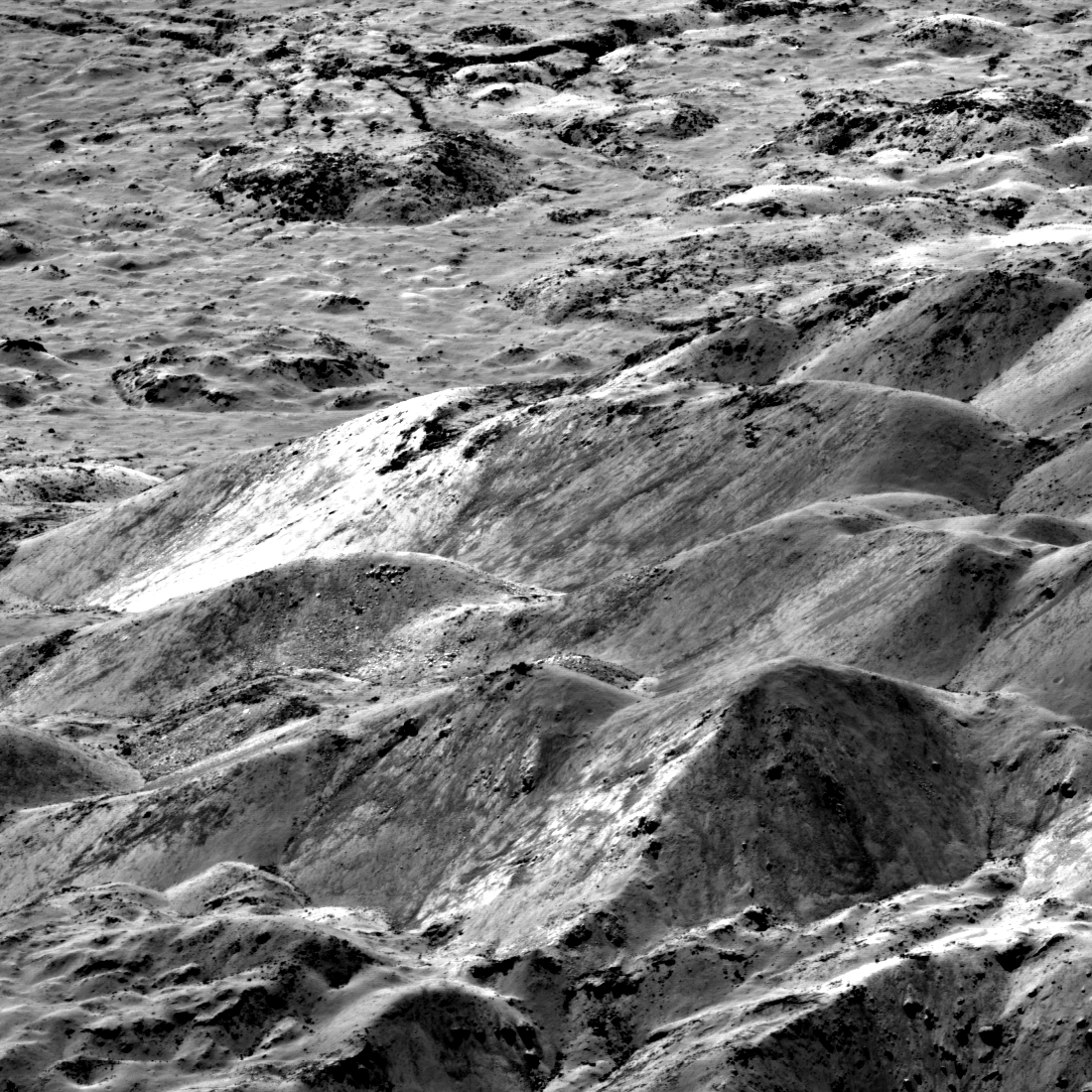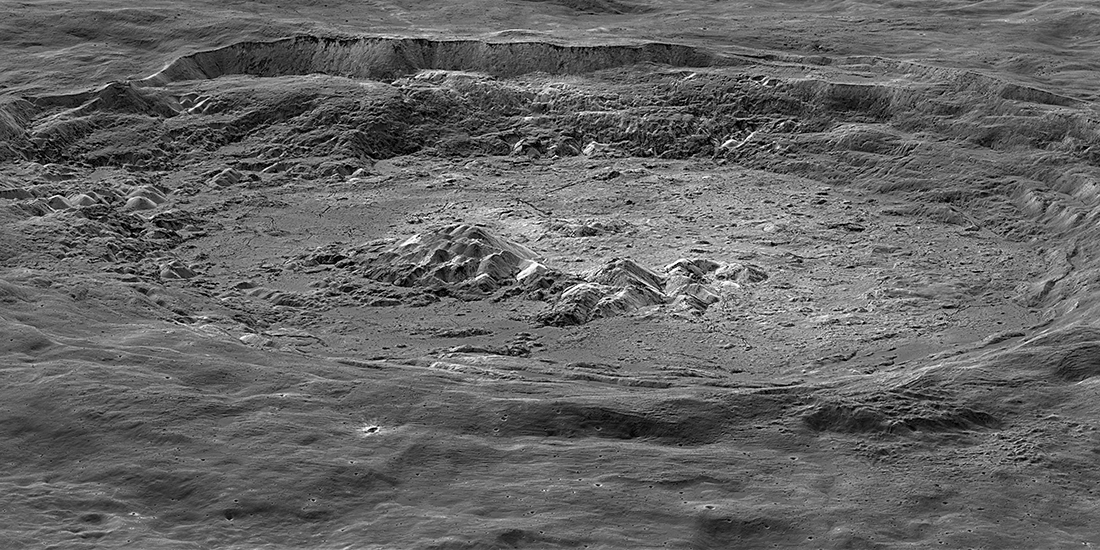
What is the composition of the crust from top to bottom? It is relatively easy to measure the surface, but what lies beneath the surface? On the Earth geologists can dig and drill deep into the crust. We do not have that luxury on the Moon, at least not yet! However, we can take advantage of natural drill holes in the crust - impact craters! When impacts occur they dig into the crust and the central peaks expose the deepest material. Jackson crater formed on what was rather uneven terrain: to the east of the crater the elevation is about +6000 meters and to the west about +3000 meters. The bottom of the crater sits at +1000 meters, and the material exposed in the central peak comes from more than 1000 meters deeper still. By studying the rocks exposed in the central peak we can get a glimpse of materials that have come up from five or more kilometers below the surface (>3 miles).

Related Featured Images
Melt Fractures in Jackson Crater
Published by Mark Robinson on 19 July 2019